Billie Muraben reports from this year’s Venice Biennale, where fantasies and realities intermingle

Exhibiting artist’s work according to national lines feels outdated, kind of quaint, troubling and regressive – the atmosphere and architecture caught somewhere between the posturing of the Eurovision Song Contest and an American university frat quad. Monumental faux-Grecian pillars prop up Neo-Classical palaces of knowledge, interspersed with striking, Modernist projects by the likes of Carlo Scarpa and Bruno Giacometti across the Giardini, the traditional site of the Venice Biennale since its first edition in 1895.
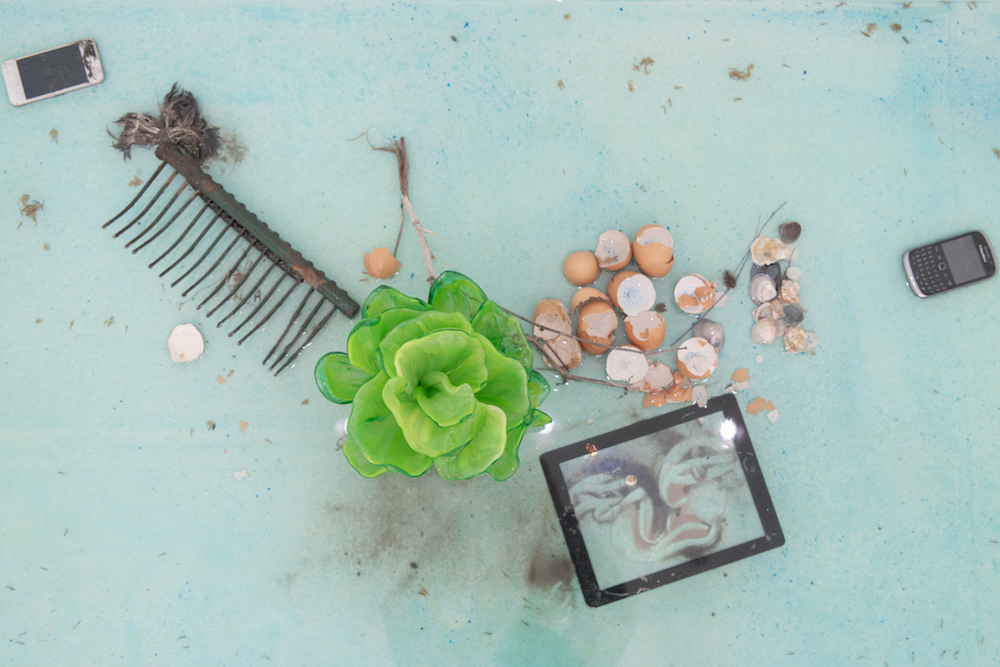
The assurance of permanence – the invoking and performance of history through architecture that’s felt amidst the pavilions – is played upon in the biennale’s theme this year, defined by artistic director Ralph Rugoff. May You Live in Interesting Times refers to what was thought, in the 1930s, to be a Chinese curse. British MP Sir Austin Chamberlain referenced it in a speech, and it has since been invoked by various politicians and writers, although it turns out it was probably made up by a British diplomat. Of the title, Rugoff wrote in his introduction: “It’s an ersatz cultural relic, and yet for all its fictional status it has had real rhetorical effects in significant public exchanges. At once suspect and rich in meaning, this kind of uncertain artefact suggests potential lines of exploration that are worth pursuing at present, especially when the ‘interesting times’ it evokes seem to be with us once again.” The guiding principle, and title for the exhibition, which runs across the Giardini and Arsenale, principally tackles divisions in society and social discourse. Acting in sort-of opposition to the historic set up of national pavilions in its want to make room for connections, contradictions and complexities, rather than straight-forward narratives about place, context and ownership. Its confident embodiment of a fake or exaggerated history undermines our assurances – rather than suggesting that art might have any answers to such problems, it embraces its position as something that sits between pleasure and critical thinking. Rugoff writes: “May You Live in Interesting Times springs from a belief that interesting art creates forms whose particular character and delineation raise questions about the ways in which we mark cultural boundaries and borders. Intelligent artistic activity involves creating forms that call attention to what forms conceal, and the functions that they fulfil. The exhibition highlight[s] art that exists in between categories, and which questions the rationales behind our categorical thinking.”
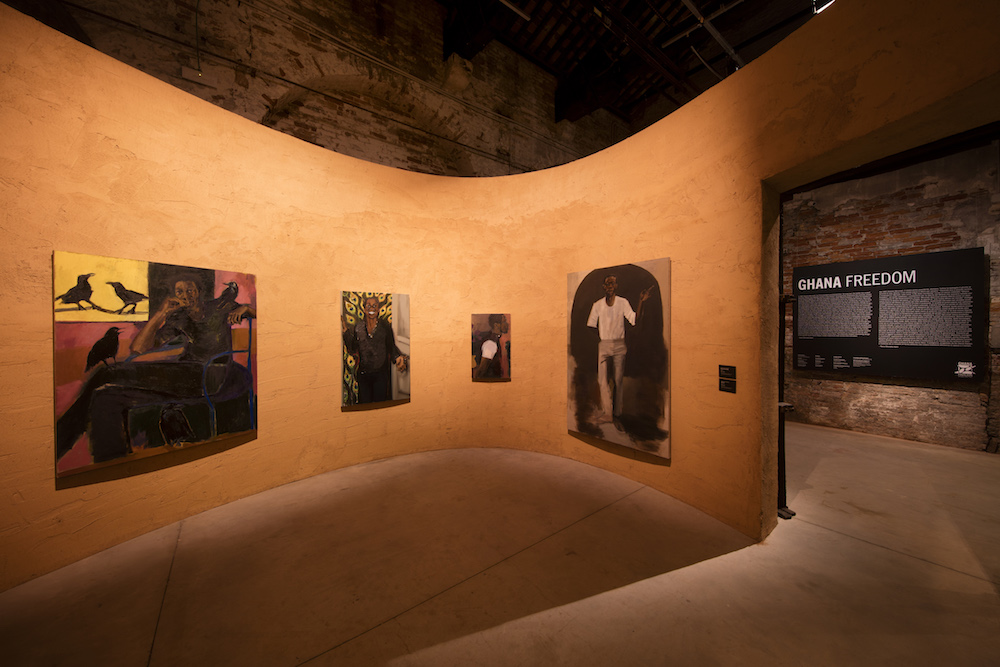
The performance programme, co-produced by the Delfina Foundation, does precisely this; activating the in-between spaces of the Biennale with “diverse, hybrid practices spanning music, movement and visual art”. It’s one of the first of its kind at the Biennale, Rugoff’s show also departing from tradition in its exhibiting of the same 79 artists across both locations – with practitioners including Arthur Jafa, Slavs & Tatars, Martine Guitterrez, Zhana Kadyrova and Alex da Corte – and the fact that all of the artists are alive. In an interview with The Art Newspaper, he said: “As a curator you have a lot more control when you’re dealing with dead artists, obviously, but it was a lot more interesting for me to be in dialogue with the artists I was working with”. In a statement on the performance programme, the artists involved are described as: “interrogating identity politics through the concepts of nationality, gender, and intersectionality. They consider the architecture of representation and how language, as articulated through the body and the voice, can reaffirm or refuse conventions”. In the opening week, Alex Baczynski-Jenkins, boychild, Paul Maheke, Nástio Mosquito, Florence Peake & Eve Stainton, Victoria Sin and Zadie Xa performed across both the Arsenale and Giardini, interrupting the solid narratives of place set up by the Biennale’s structure, and disrupting the harried crowds.
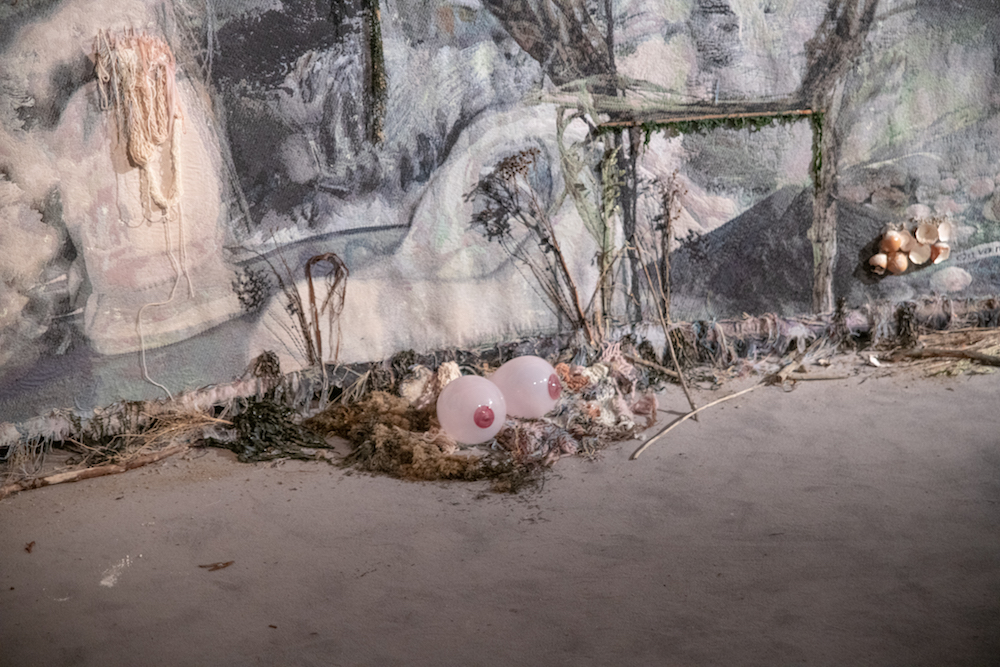
The French Pavilion’s Deep See Blue Surrounding You, by Laure Prouvost, curated by Martha Kirszenbaum, also foregrounds ambiguities – and a sense of geography that’s split between fantasy and reality. Prouvost is known for combining performance, video and sculpture in funny, poetic, immersive works that favour contemporary fables over fixed truths. In Deep See Blue, she presents a film described as “an escapist journey both tangible and imaginary, towards an ideal elsewhere” – filmed between the Paris suburbs, Marseille and Venice, among other locations – it’s set within an environment inspired by the metaphor of an octopus, (a being that carries its brains and senses in its tentacles). The attention to detail, which repeat viewers of Prouvost’s work will have come to expect, is what really draws viewers into the work, and drew the crowds in. Rather than entering the exhibition through the front door, viewers are encouraged to trail around the side of the building, through a forested area of the park, and through a back door that leads into the basement of the pavilion. Starting in ‘the belly of the beast’, you then move upwards to a room laid in watery resin, littered with seaweed, leftover objects from the film, glass eels and octopi, before moving through stepped layers of silver curtains into the grotto where the film is shown, with installations and performances occurring along trails on either side – the furniture and objects “performing” just as much as the people in the film, and those among the installation. Although light and joyful in feeling, Deep See Blue is more than just a fun, fantastical road trip; it represents an invitation to “melt into a liquid and tentacular universe among different unveiled and shared realities”, and challenges the idea of a fluid, globalised world. Echoing Zygmunt Bauman’s theory of liquid modernity, which “erodes anchored ties between people and bodies by revealing the fragility of a society based on individualism and constant change”. Deep See Blue encourages us to be accepting of a “multiple self” without fixed truths.
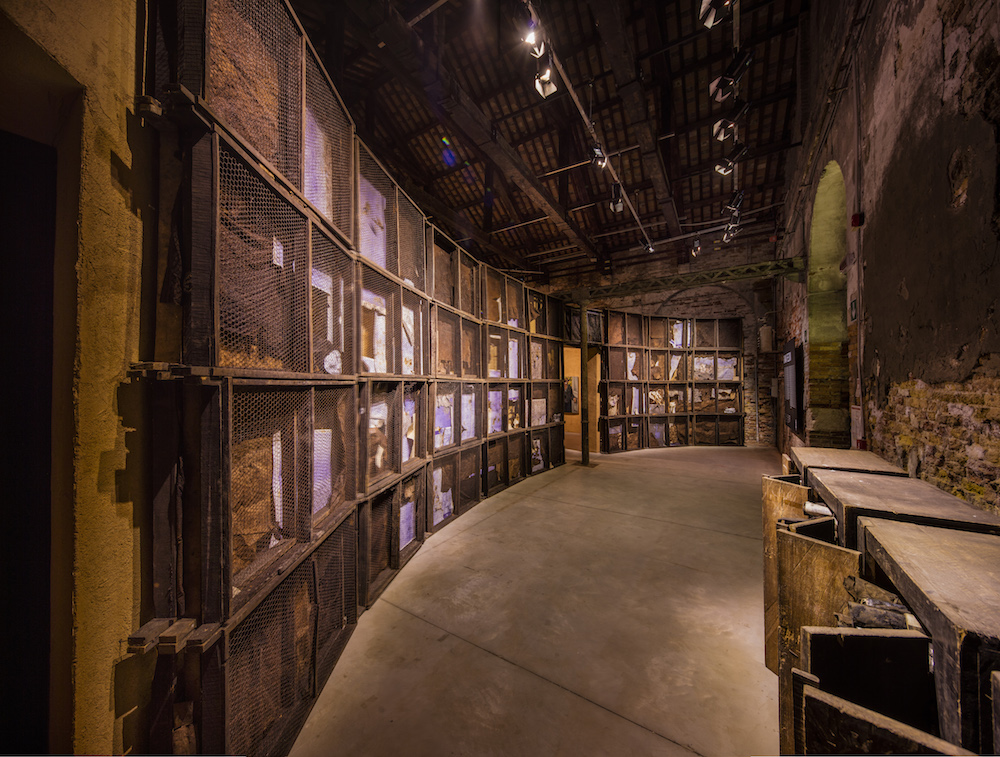
The Ghana Pavilion, at the Arsenale, also seeks to take another look at simple narratives about modernity. Titled Ghana Freedom, the pavilion is curated by Nana Oforiatta Ayim, with interior architecture by Sir David Adjaye OBE, and the late Okwui Enwezor as strategic advisor. It’s the first time Ghana has exhibited as an official pavilion at the Biennale, and its core focus is on examining the “legacies and trajectories” of its freedom as an independent nation since 1957. Oforiatta-Ayim described the pavilion’s significance, “especially in this moment”, in a press release accompanying the exhibition: “The conversations around nations is broadening in the face of issues of migrations; of us redefining our connections to the diasporas throughout our ‘year of return’; of discussing what it might mean to have our cultural objects returned, and how we thus might redefine ourselves in the world; and of finally moving out of the ‘postcolonial’ moment into one we have yet to envision”. The pavilion is showing works by Felicia Abban, John Akomfrah, El Anatsui, Lynette Yiadom-Boakye, Ibrahim Mahama, Selasi Awusi Sosu; in elliptically-shaped, interconnected spaces. Named after the song composed by E. T. Mensah, Ghana Freedom examines the legacies and trajectories of that freedom, and how it continues to impact the artists involved, who span three generations of people rooted in Ghanaian culture and its diasporas.
Designed by Adjaye, the space is symbolic of classical earth house structures, and, importantly, is not a simulation; it’s anti-spectacular, in that it places you within the interior of the space, rather than viewing from the ‘exotic’ exterior. The works shift between film, installation, photography and painting; from soft focus studio portraits, to studies of human and ecological violence, installations of bottles laid on the ground and wall hangings of caps, and atmospheric paintings in muted tones. The interior architecture, and the socio-political context that underpins the curation, gives the exhibition a sense of continuity without overwhelming the work, or pulling it into any strict narratives.
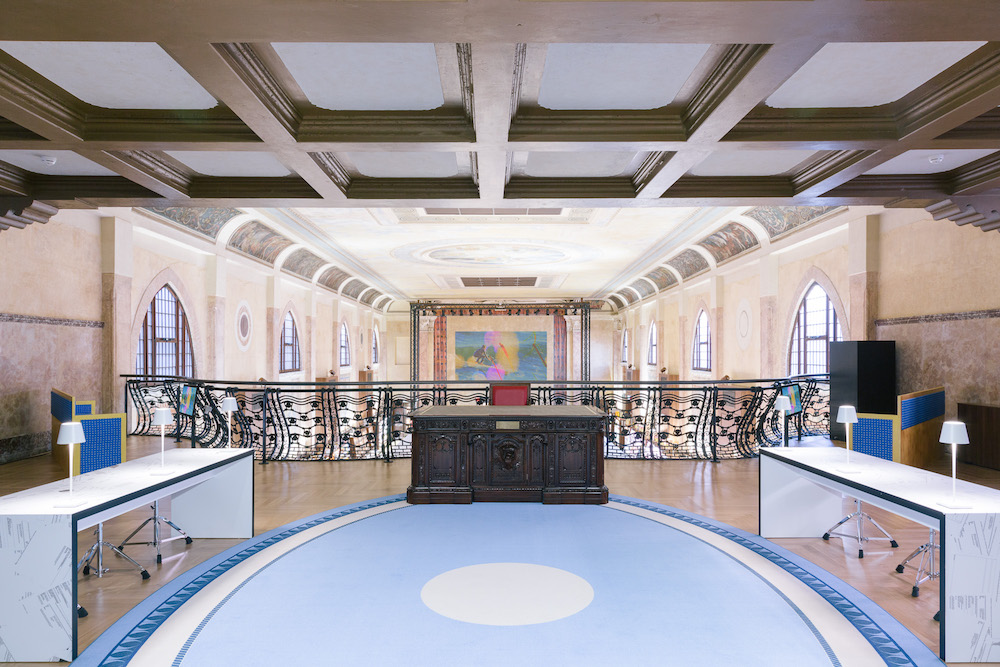
Outside of the main body of the Biennale, above the Despar supermarket in Teatro Italia, Cannaregio, Kenneth Goldsmith has installed a model of parts of the White House Oval Office, and printed almost 60,000 pages of documentation of the emails sent from Hillary Clinton’s private server. In HILLARY: The Hillary Clinton Emails, curated by Francesco Urbano Ragazzi and presented by the Zuecca Projects, Goldsmith wanted to demystify the hysterics surrounding Clinton’s emails from her time as Secretary of State: “And what of them? Not much. They’re unclassified… they’re a shrug”, he wrote in the accompanying exhibition guide. By confronting his audience with the physical artefacts, “you can see for yourself how utter insignificance can be manipulated into tragically historical significance”.
The exhibition, the second curated by Francesco Urbano Ragazzi at Despar, which opened in 2016 after a period of renovation, reflects upon the intermingling between public and private space in the age of mass digitalisation (before being a supermarket, the former cinema had been a university building, and then fallen into disrepair). The furniture for the ‘reading room’ behaves more like a digital render than actual structures, and the Oval Office furniture and textiles mimic the originals so well that it also somehow hovers in the space, rather than feeling entirely placed there. The clintonemail.com archive is printed in books, and as a stack displayed on a grand desk, accompanied by films from the Ubuweb archive, founded by Goldsmith, which play on small screens on the balcony, and are projected beneath the original cinema lights once each evening.
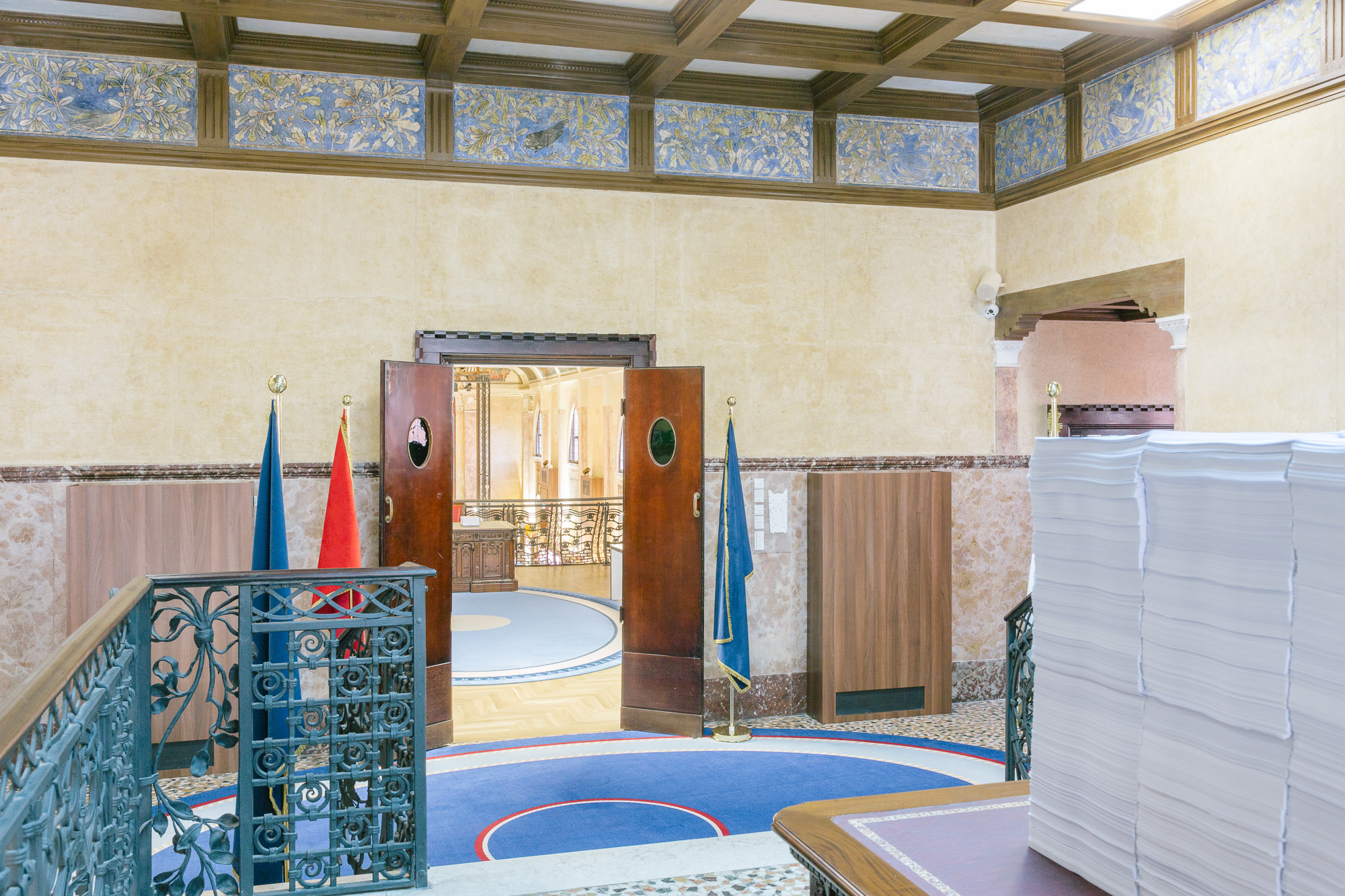
The exhibition, Goldsmith says, “is the first public appearance of the emails”, having turned into a sort-of ghost in full view. “The pile of paper is rather unimpressive, rebutting Trump’s efforts to make them monumental”, says Francesco Urbano Ragazzi. “In this way, Goldsmith creates an anti-monument to the folly of Trump’s heinous smear campaign against Clinton.” It’s this focus on the anti-monument, on moving away from clear conclusions, singular interpretations and tidy narratives, that provides the closest thing to a defining feature of the Venice Biennale, or our interesting times.